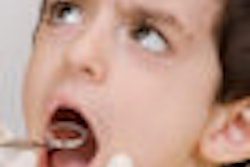About 30% of U.S. children and adolescents were covered by government-sponsored dental insurance in 2006, up from 18% in 1996, according to a new report from the Agency for Healthcare Research and Quality (AHRQ), part of the U.S. Department of Health and Human Services.
Much of the increase resulted from the State Children's Health Insurance Program, which began in 1997, and extensions of Medicaid coverage for dental services. Private dental insurance enrollment remained relatively unchanged during the period.
AHRQ's analysis also found that between 1996 and 2006:
- Enrollment in government dental insurance rose sharply among Hispanic and black adolescents and children, 48% and 35%, respectively.
- White children and adolescents were less likely than blacks and Hispanics to have public dental insurance, but their enrollment doubled from 10% to 20%.
- Largely due to expanded government coverage, only 19% of U.S. children had no dental insurance in 2006, compared with 29% in 1996.
The data is taken from AHRQ's Medical Expenditure Panel Survey, a detailed source of information on the health services used by Americans, the frequency with which they are used, the cost of those services, and how they are paid. For more information, see the report, titled "Dental Coverage of Children and Young Adults under Age 21, United States, 1996 and 2006," on the AHRQ Web site.



















